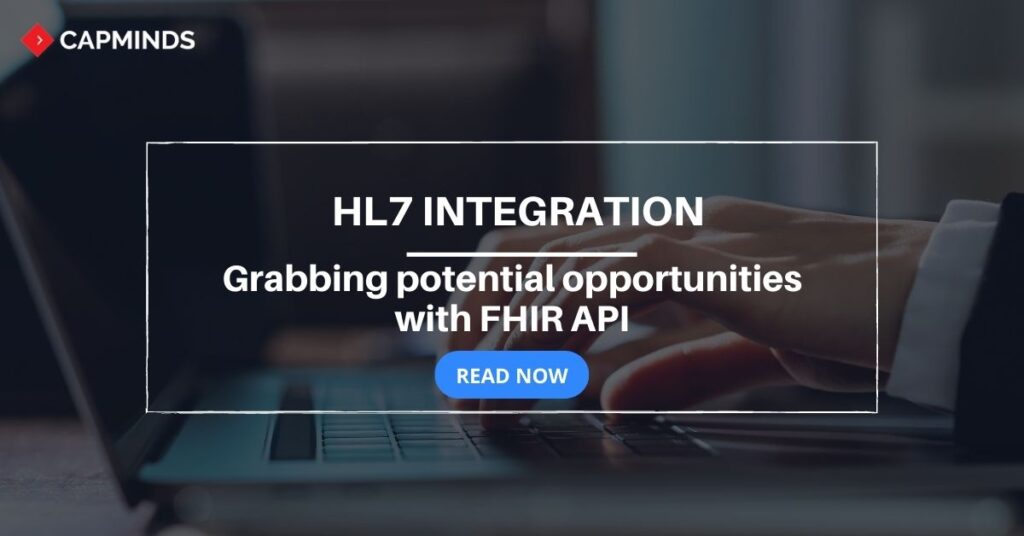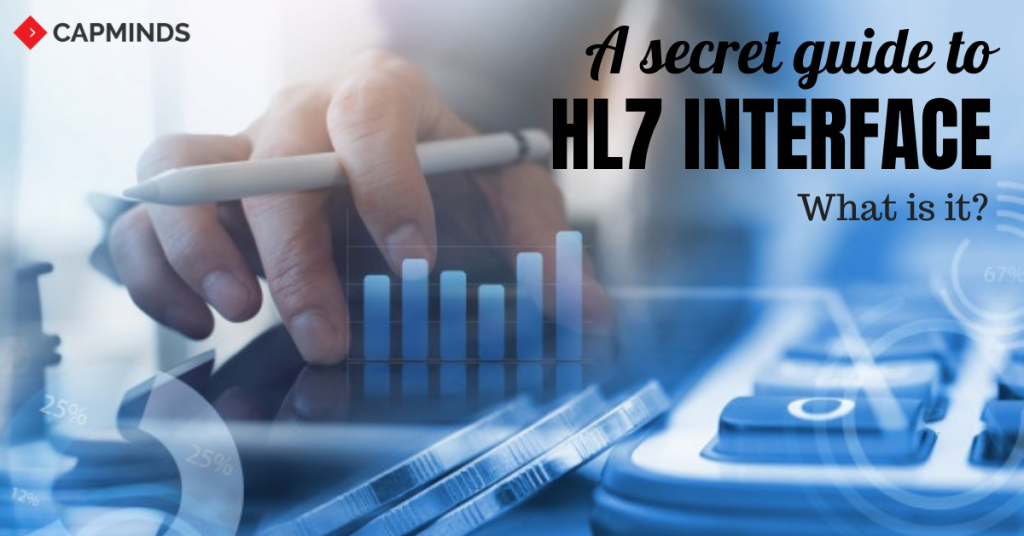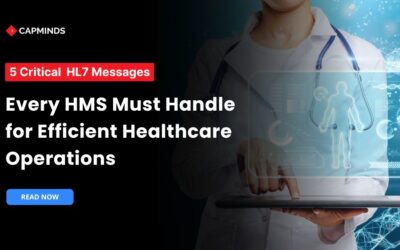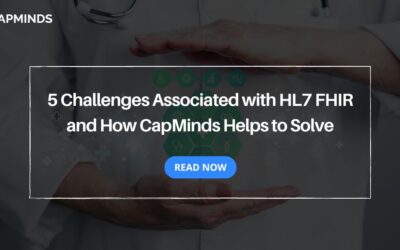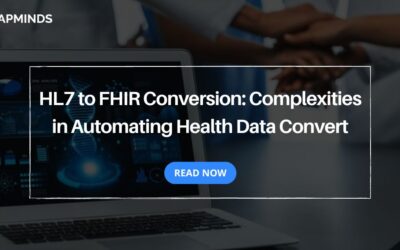HL7 Integration: Grabbing Potential Opportunities With FHIR API
The challenges with fast and reliable data transfer between medical systems are widely being resolved by the Health Level Seven (HL7) International, a non-profit organization that provides standards for interoperability in health IT.
The standards provided by HL7 concentrate on the application layer, “layer 7” in the Open Systems Interconnection model (OSI model) and are for allowing healthcare organizations to seamlessly share health information. HL7 integration is very much needed for merging and connecting data from isolated pools of different medical systems.
HL7 Integration: An Informational Pocket Diary
HL7 standards make interoperability easier than ever. The most essential of these standards are;
- HL7 V2 – the most commonly used messaging standard for medical and health data exchanges today.
- HL7 V3 – the next version that incorporates both messages & documents and provides a more extensive informational model.
- HL7 CDA – these standards are a slice of the HL7 V4 specification that concentrates on clinical documents.
- HL7 CCD – these standards describe medical summaries of patients for the US market.
- HL7 EHR – a group of functional models and profiles for controlling EHRs.
- HL7 FHIR – a recently developed standard with modular components and enhanced with web-based APIs.
HL7 V2 was created to solve the interoperability issues. It smoothened the communication between various medical systems like EMR, hospital information, labs, etc. It even eased the process of patient transfer from one specialist to another and reduced paperwork. It finally struck off the term “nightmare” from the data sharing process.
- HL7 V2 defines 80% of the interface leaving the other 20% for customization.
- HL7 V2 used American Standard Code for Information Interchange-based (ASCII) messages with groupings, encoding rules, cardinality, and the default character set to reach the standard look and meaning of messages.
- Unfortunately, I was still not perfect.
- Several upgrades are being made for meeting those challenges.
- HL7 V2 is used by more than 95% of healthcare providers across the US.
RELATED: Top 6 Secret Ways To Simplify Your HL7 Integration
HL7 Interface: A Sneak Peek
The HL7 interfaces can be defined as two terminologies ‘HL7’ and ‘interface’. HL7 is utilized by healthcare organizations to enable messaging between clinical applications.
The term interface is defined as interconnection or communication between those applications or systems. The healthcare application vendors need to provide a means within their application for this interaction to take place.
Healthcare providers will use the HL7 interface specifications for the various message types as a starting point and also will expose input and/or output interfaces for their application. An HL7 interface includes:
- Export endpoint: For the sending application
- Import endpoint: For the receiving application
- Method: For moving data between two applications
All these 3 elements will together form an HL7 interface
HL7 Integration Tools/Approaches
1. Point-to-point
- This approach ensures protected and unrestrained data interactions between HL7 interfaces.
- This approach includes the integration of committed interfaces.
- These interfaces are particularly built for sending and receiving data.
- The presence of committed interfaces between two systems makes it a more reliable approach. This makes data recognition much easier.
- The drawback of this approach is the requisite of creating different interfaces and links between systems.
- This may need additional time and resources.
2. Interface and HL7 integration engine
- This approach is through the HL7 integration engine.
- It can be seen as a type of adapter with the capacity to connect multiple systems.
- The integration engine used here comes with the capability to modify data formats according to the standards of each system.
- UX design can maximize the integration engine’s functionality.
- It can simplify the data communication and message workflow.
- This approach eliminates the requirements for making various interfaces as needed in point-to-point interfaces to connect the systems.
HL7 Integration Benefits
- HL7 integration makes sure of consistency across the healthcare spectrum.
- Improves the decision-making process.
- Authorizes a standardized data exchange with third-party sources.
- Enhances the provision of better care to patients.
- Promotes effective communication between different healthcare systems.
HL7 FHIR API Perks
FHIR APIs are re-usable
Once an API (Application Programming Interface) is created for a particular reason, it can be used to support the same functionality across various applications. We can term it a “one-time investment” for development.
Offers a global approach
APIs provide a safe and reliable data connection essential for sensitive health data regardless of the programming tools or operating system used.
Provides research resources
FHIR ensures the easy transfer of well-structured data that is suitable for analysis. Healthcare data is very crucial to achieving advanced treatments, better diagnoses, and more.
Easy telehealth app integrations
EHR to HL7 FHIR integrations ensures easy integration of medical data into telehealth apps, systems enabling physicians to get hold of the whole overview of the patient’s health and results and to do updates about the improvizations in real-time.
Allows patients to control their health
HL7 FHIR integrations ensure that software developers can seamlessly integrate health data within any patient-facing app. Having access to the medical data by patients themselves gives them confidence and increases engagement from their side.
HL7 Integration Without API Downsides
Interface programming becomes complicated
- Before HL7 software integration, a lot of programming and knowledge of systems are needed to connect two systems.
- The process consumes a lot of effort and time.
- Have to continuously monitor and test interfaces to find any disturbances.
Extreme variance
- The old HL7 integration provides opportunities for too much customization.
- More unspecified data semantics caused data variance.
- Different values have different meanings in different systems.
- Provides misinformation and creates confusion about a patient’s health.
Asking for information on-demand is not possible
- In HL7 V2, one has to subscribe to a feed where all data is shared regardless of the requirement.
- This resulted in the sharing of unrequired information.
- Created privacy concerns.
Developed upon the Specialists’ theories
- The traditional HL7 integration was evolved based on the theories and recommendations from clinical interface experts.
- It didn’t work for the problems faced by real end-users.
Role Of HL7 Integration In Solving Obstacles With API
- FHIR API became a futuristic modern solution for HL7 & EMR integration.
- It is centered on web-based standards.
- It allows systems that speak different languages to interact with each other.
- To connect two different systems manually, one need not know any specifications of the other system.
- It works on techs like RESt, XML, HTTPS, JSON, ATOM, and OAuth.
- These technologies make the integration processes more faster and uncomplicated.
HL7 Integration Services From CapMinds
CapMinds Technologies offers the perfect all-in-one Interoperability solutions for your clinical needs. Our HL7 integration and FHIR standards services facilitate the innovatory exchange to create new possibilities, client-centered services for keeping our clients in the limelight, clinical integrations facilitate EHR integrated laboratory, imaging, e-prescriptions, EPCS, pharmacy, and more, and enhance the activation process for your individual and collective needs.
“CapMinds Technologies is the place that will make you achieve your goals by combining “Expertise+Hardwork+Commitment”.
CapMinds FHIR APIs services cover your patients’ health data with maximum security, privacy, and confidentiality. We update ourselves with the latest versions like HL7 Version 2, Version 3, FHIR, SMART on FHIR, CDA, X12, Mirthconnect, and security standards. We offer the best HL7 integration and HL7/FHIR interface development services for the federal government, health tech startups, laboratories, clinics, and practices.
“Unite with us to get the maximum benefits of our HL7 integration services and rise to be the first”
